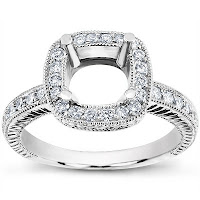Buying an engagement ring is not something to be taken lightly. The decision should take careful thought and calculation as it’s not only an expensive purchase, but also one that is supposed to be once-in-a-lifetime. While the diamond is of course important, and the centerpiece of any engagement ring, there are many different facets to the ring that are also significant. You want to choose the shape of the diamond, the cut, color, clarity, and carat weight as well as the perfect metal band, but the ring setting is also an important part of the engagement ring as a whole.
As the search for your perfect engagement ring starts to take shape, you’ll notice a number of different engagement setting styles. They vary from classic and simple styles to more extravagant and modern interpretations. While there is no “number one” solution, the best advice is to pick the setting you and your partner prefer the most. There are many popular settings, but ultimately, choose the one that works best.
The Prong setting is perhaps the most common. This is a great setting for showcasing the center diamond and allowing light to pass through the stone and increase its brilliance and shine.
The Bezel setting is also quite popular. It has a metal border that surrounds or partially surrounds the diamond. It offers good protection, but does not allow as much light to shine through.
The Pave setting is defined by a number of small diamonds set into the ring. This is a fantastic way to make your ring look bigger than it actually is.
Channel settings are very popular with wedding bands. These include horizontal rows of diamonds with no metal in between each diamond. The surface is very smooth which makes the ring less likely to get caught on things, but the ring can be difficult to re-size later.
The Bar setting is quite similar to the channel, but with metal bars in between each of the diamonds. This allows for more protection to the stones in the setting.
With a Tension setting, the diamond appears to be floating because it’s not held in place by any piece of metal. While this is its biggest attribute, it’s also its major flaw allowing for very little security of the stone.

